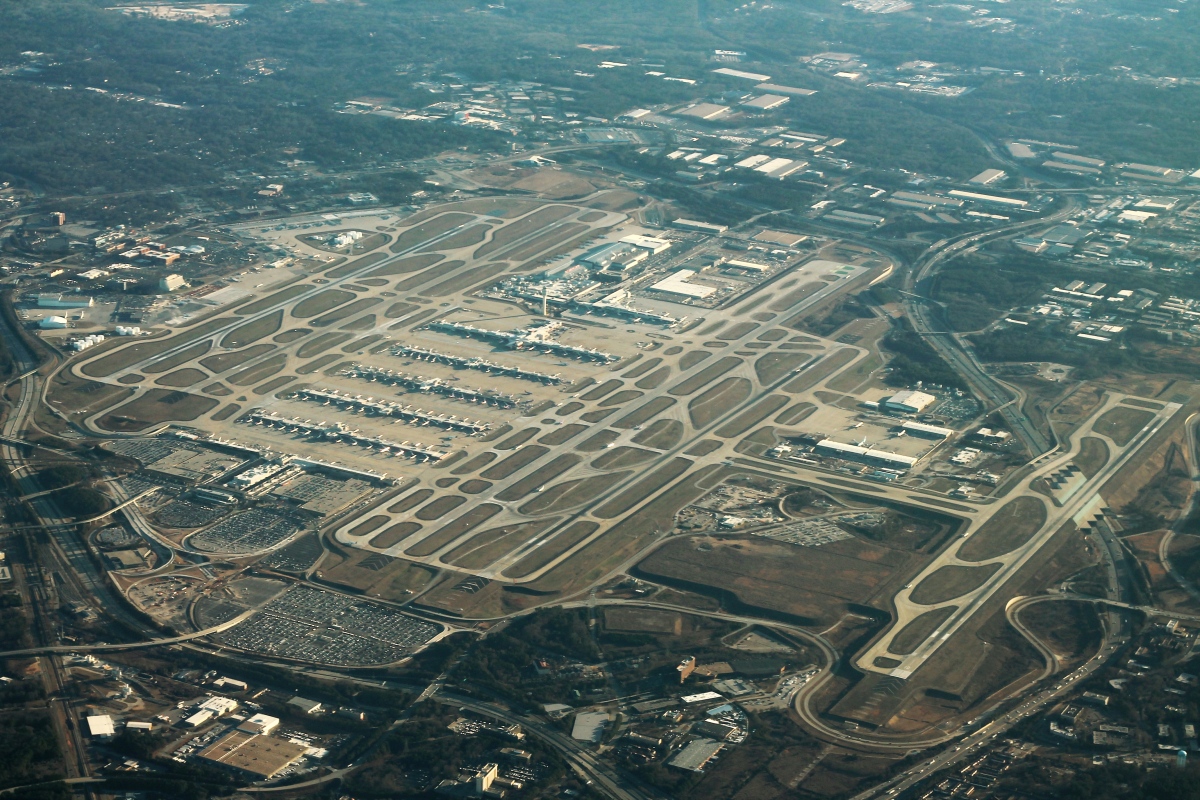
Hello All,
Like last year, we will examine the world’s 50 busiest passenger airports and compare traffic against 2019 levels.
The overall Table
The below table shows the 50 busiest passenger airports in 2023. This blog collected the following data:
| Rank | IATA Code | City | Pax (m) | 2019-2023 Growth (%) |
| 1 | ATL | Atlanta | 104.7 | -5.2 |
| 2 | DXB | Dubai | 86.9 | 0.6 |
| 3 | DFW | Dallas | 81.8 | 8.9 |
| 4 | LHR | London | 79 | -2.3 |
| 5 | HND | Tokyo | 78.2 | -8.3 |
| 6 | DEN | Denver | 77.8 | 12.8 |
| 7 | IST | Istanbul | 76.2 | 10.9 |
| 8 | LAX | Los Angeles | 75.1 | -14.8 |
| 9 | ORD | Chicago | 73.9 | -12.3 |
| 10 | DEL | New Delhi | 72.2 | 5.4 |
| 11 | CDG | Paris | 67.4 | -11.5 |
| 12 | CAN | Guangzhou | 63.2 | -13.9 |
| 13 | JFK | New York | 62.5 | 0.0 |
| 14 | AMS | Amsterdam | 61.7 | -14.0 |
| 15 | MAD | Madrid | 60.2 | -2.5 |
| 16 | FRA | Frankfurt | 59.4 | -15.8 |
| 17 | SIN | Singapore | 58.9 | -13.8 |
| 18 | MCO | Orlando | 57.7 | 14.0 |
| 19 | LAS | Las Vegas | 57.6 | 11.8 |
| 20 | ICN | Seoul | 56.1 | -21.2 |
| 21 | PVG | Shanghai | 54.5 | -28.5 |
| 22 | CLT | Charlotte | 53.4 | 6.4 |
| 23 | PEK | Beijing | 52.9 | -47.1 |
| 24 | SZX | Shenzhen | 52.7 | -0.4 |
| 25 | MIA | Miami | 52.3 | 13.9 |
| 26 | BKK | Bangkok | 51.7 | -20.9 |
| 27 | BOM | Mumbai | 51.6 | 9.2 |
| 28 | CGK | Jakarta | 51.0 | -19.0 |
| 29 | SEA | Seattle | 50.9 | -1.7 |
| 30 | SFO | San Francisco | 50.2 | -12.7 |
| 31 | BCN | Barcelona | 49.9 | -5.3 |
| 32 | EWR | Newark | 49.1 | 6.0 |
| 33 | PHX | Phoenix | 48.8 | 5.4 |
| 34 | MEX | Mexico City | 48.4 | -3.8 |
| 35 | KUL | Kuala Lumpur | 47.2 | -24.2 |
| 36 | IAH | Houston | 46.1 | 1.8 |
| 37 | DOH | Doha | 45.9 | 18.6 |
| 38 | MNL | Manila | 45.4 | -5.0 |
| 39 | TFU | Chengdu | 44.8 | -19.9 |
| 40 | CKG | Chongqing | 44.7 | -0.2 |
| 41 | SHA | Shanghai | 42.5 | -6.8 |
| 42 | YYZ | Toronto | 42.3 | -16.2 |
| 43 | KMG | Kunming | 42.0 | -12.7 |
| 44 | XIY | Xi’an | 41.4 | -12.3 |
| 45 | GRU | Sao Paulo | 41.3 | -4.0 |
| 46 | HGH | Hangzhou | 41.2 | 2.7 |
| 47 | LGW | London | 40.9 | -12.2 |
| 48 | BOS | Boston | 40.8 | -4.0 |
| 49 | SGN | Ho Chi Minh | 40.7 | 1.5 |
| 50 | FCO | Rome | 40.5 | -7.0 |
A few remarks at the airport level:
- 40.5m was the threshold to make it to the top 50, compared with 44.3m in 2019.
- For the top 10, it was 72.2m in 2023 vs. 75.1.
- Among the 2023 top 50 airports, 17 had more passenger traffic than in 2019, and 33 less.
- The three airports that lost the most traffic between 2023 and 2019 were: Beijing PEK (47.1m), Shanghai PVG (21.7m), and Seoul ICN (15.1m).
- The three airports that gained the most traffic between 2023 and 2019 were: Denver DEN (8.8m), Istanbul (7.5m), and Doha (7.2m).
Aggregating at the regional level
The table below shows the regional aggregates:
| Region | Top 50 2023 Count | 2023 Traffic (m) | 2019-2023 Growth (%) | Top 50 Count Chg vs. 2019 |
| Americas Ex USA | 3 | 132 | -8.2 | 1 |
| Asia Ex China | 10 | 553 | -10.7 | -2 |
| China | 10 | 480 | -17.9 | 0 |
| Europe | 9 | 535 | -6.5 | -1 |
| Middle East | 2 | 133 | 6.2 | 1 |
| USA | 16 | 983 | 0.5 | 1 |
| Overall | 50 | 2,816 | -6.8 | 0 |
A few remarks at the regional level:
- Passenger traffic levels in the Middle East and USA are above 2019 levels, with the former leading. One more airport is in the top 50 for each region.
- China and the broader Asia-Pacific regions are lagging the passenger traffic recovery since the Covid-19 pandemic. It reflects the fact social distancing and travel restrictions measures were in place for longer.
- The wider Americas and Europe traffic levels are not yet at their 2019 levels.
- Traffic at the top 50 airports is still 6.8% below 2019 levels. It might reach 2019 levels in 2024, though aircraft delivery delays (especially at Boeing) might slow passenger traffic growth.
Discover more from reviewer4you.com
Subscribe to get the latest posts to your email.





